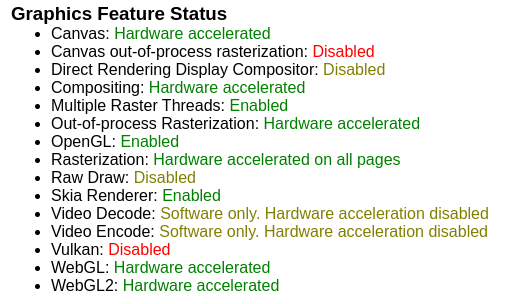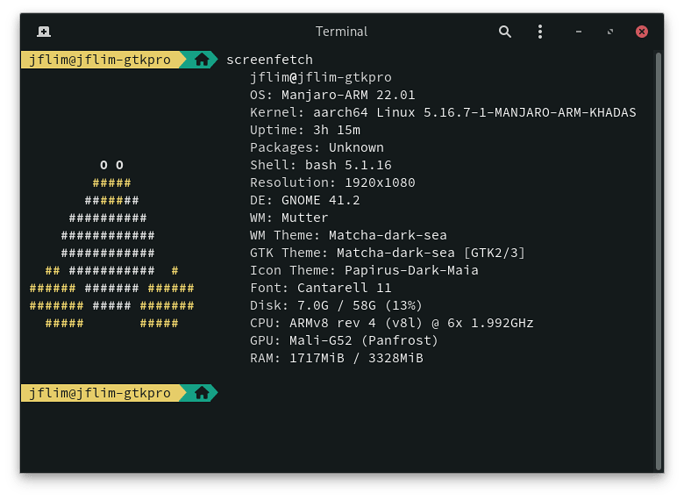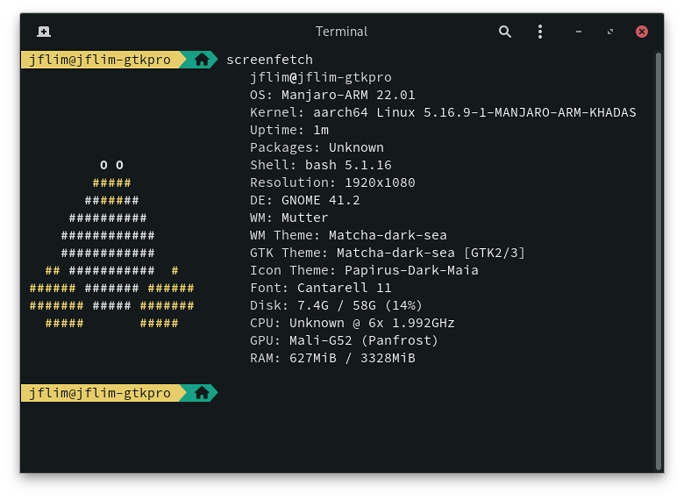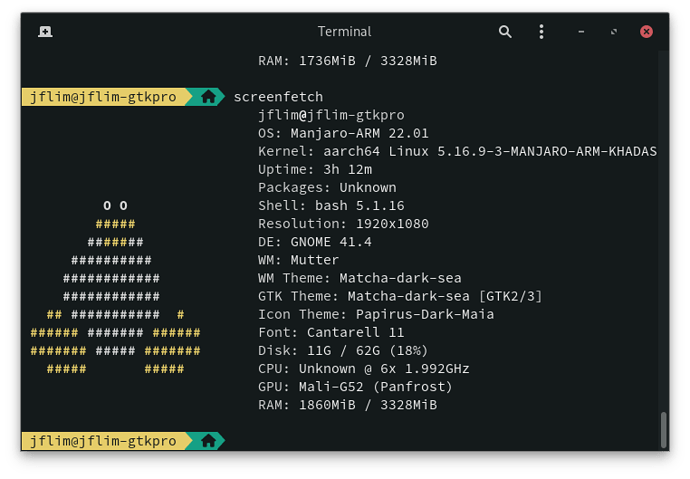First, please try to find a different .dtb file that boots up your box and has working USB. If there is none there is still a small chance to make the device work by analysing the .dtb file from Android. Although this is a complicated process because Android .dtb can look quite different than linux .dtb.
- Connect with ssh or uart and back up android image with ddbr.sh.
- Analyse image with binwalk to locate dtb file and extract with dd.
- Convert dtb to dts with device-tree-compiler.
- Dig into dts or hope someone could help.
Thank you @TheMojoMan @sora
I’ve tried these: they seem to based on S905Y2
meson-g12a-radxa-zero.dtb
meson-g12a-sei510.dtb
meson-g12a-u200.dtb
meson-g12a-x96-max.dtb
They all booted, but still no USB
Tried a few more like meson-g12b-gtking-pro.dtb, it won’t boot.
I tried this image from CoreElec:
https://github.com/CoreELEC/CoreELEC/releases/download/19.4-Matrix_rc2/CoreELEC-Amlogic-ng.arm-19.4-Matrix_rc2-Radxa_Zero.img.gz
Everything works fine, USB, network, etc.
Is there away I can extract DTB from that image to use in Manjaro Image?
I tried to simply copy the .dtb file over and edit uEnv.txt to point to the new file, it doesn’t work.
Seem like it there’s more to it 
I can also try Android I have root and get DTB, but I’ve never done this before.
Tried to use Xplore look at /dev/dtb it’s 0 bytes, so maybe I’m missing something.
Thank you!
Unfortunately no. CoreElec uses older kernel therefore .dtb files are not usable in Manjaro.
You can try to dump the .dtb/.dts from Android using the method that @sora described above or use ‘termux’ app in Android:
- termux-setup-storage
- apt update
- apt install dtc
- dtc -q -I fs -O dts /sys/firmware/devicetree/base -o /sdcard/mytvbox.dts
However, this .dtb/.dts is also not usable in Manjaro. You would need to figure out how USB is described in the extracted .dts and than try to change one of the .dtb’s that are booting Manjaro (which use different/newer syntax). It’s not impossible but needs a lot of expertise …
Just an update on Manjaro-Arm-Gnome on Beelink GT King Pro.
I was facing stability issue on BeelinK GT King Pro with mainline linux-5.15.y and 5.16.y recently (stability was good before that). Always had issue with linux-vim kernel since it switched to tobetter branch.
@spikerguy did a great job in resolving it with this Manjaro-ARM-gnome-gtking-pro-20220125.img.xz build, using bootscript.method.
This new Manjaor-Arm image works on USB Flash but somehow did not boot up on SD Card (Samsung Evo Plus Class 10 U3).
So far works smoothly and no more kernel panic issue to date. FYI, this is still a development image as such is on Unstable Branch. It can boot on any of the GT King Pro USB 3.0 or OTG Ports and with HDD attached on any ports. Thank you @spikerguy
There are two drawbacks I noticed. First is the reported available RAM is 3.25GB instead of 3.69GB when using chainloader u-boot.ext image. And second it sometimes does not “Shutdown” cleanly meaning when you “Power Off” from the “Menu” the device still have the Power LED ON and it does NOT Reboot either (just like on Manjaro mainline linux kernel).
Just updated to latest Unstable updates and is now on linux-khadas-5.16.7-1.
I don’t seem to be able to find /etc/chromium.d/default-flags to try to set Chromium “default-flags”.
In Chromium 98 the default is Hardware Composition is OFF. Enabling “Override software rendering list” or “–ignore-gpu-blocklist” does NOT turn Enable HW Composition.
Only with command line “–in-process-gpu” enable HW Composition.
In Manjaro-Arm the Chromium “default-flags” settings don’t seem to exist? How to rectify this? Just manually create /etc/chromium.d/default-flags?
Edit: Found the solution from Chromium - ArchWiki. Need to create:
~/.config/chromium-flags.conf
–ignore-gpu-blocklist
–in-process-gpu
–enable-gpu-rasterization
–enable-zero-copy
–ozone-platform-hint=auto
After that Chromium 98 start up with Compositing: Hardware Accelerated and also Ozone=Wayland enabled.

HK1/Vontar s905x3 tv box. [HK1_S905X4_4BIT_V01 / 2019-11-05] (on pcb)
have no luck booting with vim2/vim3 releases, but gtking-pro-images or
vim3l-images seems working pretty well with meson-sm1-x96maxplus-vim1000m-sound.dtb (but no wifi, didn’t test bt)
unfortunately, it boots only from usb3 flash, sd gives error on serial:
Internal error: synchronous external abort...
[ 0.464749] Internal error: synchronous external abort: 96000010 [#1] PREEMPT SMP
[ 0.466597] Modules linked in:
[ 0.469616] CPU: 3 PID: 82 Comm: kworker/u8:3 Not tainted 5.16.2-2-MANJARO-ARM-KHADAS #1
[ 0.477636] Hardware name: SEI Robotics SEI610 (DT)
[ 0.482469] Workqueue: events_unbound deferred_probe_work_func
[ 0.488245] pstate: 204000c9 (nzCv daIF +PAN -UAO -TCO -DIT -SSBS BTYPE=--)
[ 0.495144] pc : regmap_mmio_read32le+0x10/0x2c
[ 0.499628] lr : regmap_mmio_read+0x44/0x70
[ 0.503769] sp : ffff8000120a3980
[ 0.507046] x29: ffff8000120a3980 x28: 0000000000000000 x27: 0000000000000000
[ 0.514119] x26: ffff800011c9d620 x25: 0000000000000008 x24: 0000000000000000
[ 0.521191] x23: ffff000000c85a00 x22: ffff8000120a3a44 x21: ffff8000120a3a44
[ 0.528263] x20: 0000000000000000 x19: ffff000004527b00 x18: 0000000000000014
[ 0.535336] x17: 00000000ea12ac48 x16: 000000001c4c8cda x15: 000000000f050f6e
[ 0.542408] x14: ffffffffffffffff x13: 0000000000000018 x12: 0101010101010101
[ 0.549481] x11: 0000000000000018 x10: 0101010101010101 x9 : 7f7f7f7f7f7f7f7f
[ 0.556553] x8 : 0101010101010101 x7 : 0000000000000000 x6 : 0000000000000000
[ 0.563626] x5 : 0000000000000000 x4 : 0000000000000000 x3 : ffff8000109656b4
[ 0.570699] x2 : ffff8000109654f4 x1 : 0000000000000000 x0 : ffff800011d25000
[ 0.577773] Call trace:
[ 0.580188] regmap_mmio_read32le+0x10/0x2c
[ 0.584326] _regmap_bus_reg_read+0x18/0x2c
[ 0.588466] _regmap_read+0x64/0xf0
[ 0.591916] _regmap_update_bits+0xd0/0x10c
[ 0.596056] regmap_update_bits_base+0x64/0xa0
[ 0.600455] dwc3_meson_g12a_usb2_init_phy+0x44/0xf0
[ 0.605372] dwc3_meson_g12a_usb2_init+0x74/0xc0
[ 0.609942] dwc3_meson_g12a_usb_init+0x20/0x40
[ 0.614427] dwc3_meson_g12a_probe+0x204/0x36c
[ 0.618826] platform_probe+0x68/0xe0
[ 0.622448] call_driver_probe+0x2c/0x140
[ 0.626416] really_probe+0xb4/0x370
[ 0.629952] __driver_probe_device+0xf8/0x120
[ 0.634265] driver_probe_device+0x40/0x100
[ 0.638406] __device_attach_driver+0x98/0x130
[ 0.642803] bus_for_each_drv+0x78/0xd0
[ 0.646598] __device_attach+0xd8/0x1b4
[ 0.650393] device_initial_probe+0x14/0x20
[ 0.654535] bus_probe_device+0x98/0xa0
[ 0.658328] deferred_probe_work_func+0xb8/0x110
[ 0.662901] process_one_work+0x1c0/0x344
[ 0.666868] worker_thread+0x1e4/0x38c
[ 0.670577] kthread+0x148/0x154
[ 0.673768] ret_from_fork+0x10/0x20
[ 0.677309] Code: d503245f f9400000 d503233f 8b214000 (b9400000)
[ 0.683345] ---[ end trace ff2f3457b5727eb1 ]---
[ 0.687915] note: kworker/u8:3[82] exited with preempt_count 1
GT King Pro on Manjaro-ARM-gnome-gtking-pro-20220125.img.xz Updated to latest linux-khadas-5.16.9-1 on Unstable.
Edit: Just curious what update from mesa-21.3.5-1.2 to mesa-21.3.5-1.3 brings? Is it a bug fix?
Thank you @TheMojoMan
I followed the instruction and was able to get the dts file.
I uploaded, but cannot included links in my post yet.
How can I include links?
If someone can share some more direction that would be great!
Thank you!
Is it possible to boot from SD card somehow? Using proper U-Boot.ext or editing some conf files to point to a proper partition?
Error is caused by wrong interrupt which means the dts is not suited for your device.
Also someone can try adding reserved memory used by some vendor uboots.
Something similar to This
GT King Pro - Unstable Branch, Updated to latest linux-khadas-5.16.9-3 and to GNOME 41.4
So far running smoothly. Thanks Manjaro Team.
Am6 plus image works fine in my test. Are you going to use it on emmc or sd card?
I have not been about to get wifi to work yet.
Khadas Vim’s are using Mainline uboot so it will not longer boot over Android in emmc.
You can get Am6 Plus Images here
Yes it is the same process just like using sd card.
Yes need to add spdif node to the dts.
Not sure if linux on amlogic device support that.
No idea. I will give it a try myself to see if there is any regression on mesa or xwayland
I had similar issue with KDE Plasma Wayland back in August 2021 time frame on GT King Pro. So it seems like this issue of KDE Plasma Wayland still persist.
From Khadas-Vim3-Focal-mainline image: env.txt
# HDMI resolution auto detection
# yes - auto detection
# no - set HDMI resolution via 'hdmi' node
hdmi_autodetect=yes
# HDMI mode
# Resolution Configuration
# Symbol | Resolution
# ----------------------+-------------
# "480x272p60hz" | 480x272 Progressive 60Hz
# "480x320p60hz" | 480x320 Progressive 60Hz
# "480p60hz" | 720x480 Progressive 60Hz
# "576p50hz" | 720x576 Progressive 50Hz
# "720p60hz" | 1280x720 Progressive 60Hz
# "720p50hz" | 1280x720 Progressive 50Hz
# "1080p60hz" | 1920x1080 Progressive 60Hz
# "1080p50hz" | 1920x1080 Progressive 50Hz
# "1080p30hz" | 1920x1080 Progressive 30Hz
# "1080p24hz" | 1920x1080 Progressive 24Hz
# "1080i60hz" | 1920x1080 Interlaced 60Hz
# "1080i50hz" | 1920x1080 Interlaced 50Hz
# "2160p60hz" | 3840x2160 Progressive 60Hz
# "2160p50hz" | 3840x2160 Progressive 50Hz
# "2160p30hz" | 3840x2160 Progressive 30Hz
# "2160p25hz" | 3840x2160 Progressive 25Hz
# "2160p24hz" | 3840x2160 Progressive 24Hz
# "smpte24hz" | 3840x2160 Progressive 24Hz SMPTE
# "2160p60hz420" | 3840x2160 Progressive 60Hz YCbCr 4:2:0
# "2160p50hz420" | 3840x2160 Progressive 50Hz YCbCr 4:2:0
# "640x480p60hz" | 640x480 Progressive 60Hz
# "800x480p60hz" | 800x480 Progressive 60Hz
# "800x600p60hz" | 800x600 Progressive 60Hz
# "1024x600p60hz" | 1024x600 Progressive 60Hz
# "1024x768p60hz" | 1024x768 Progressive 60Hz
# "1280x800p60hz" | 1280x800 Progressive 60Hz
# "1280x1024p60hz" | 1280x1024 Progressive 60Hz
# "1360x768p60hz" | 1360x768 Progressive 60Hz
# "1440x900p60hz" | 1440x900 Progressive 60Hz
# "1600x900p60hz" | 1600x900 Progressive 60Hz
# "1600x1200p60hz" | 1600x1200 Progressive 60Hz
# "1680x1050p60hz" | 1680x1050 Progressive 60Hz
# "1920x1200p60hz" | 1920x1200 Progressive 60Hz
# "2560x1080p60hz" | 2560x1080 Progressive 60Hz
# "2560x1440p60hz" | 2560x1440 Progressive 60Hz
# "2560x1600p60hz" | 2560x1600 Progressive 60Hz
# "3440x1440p60hz" | 3440x1440 Progressive 60Hz
hdmi=720p60hz
I would say you can because they use 5.x kernel.


